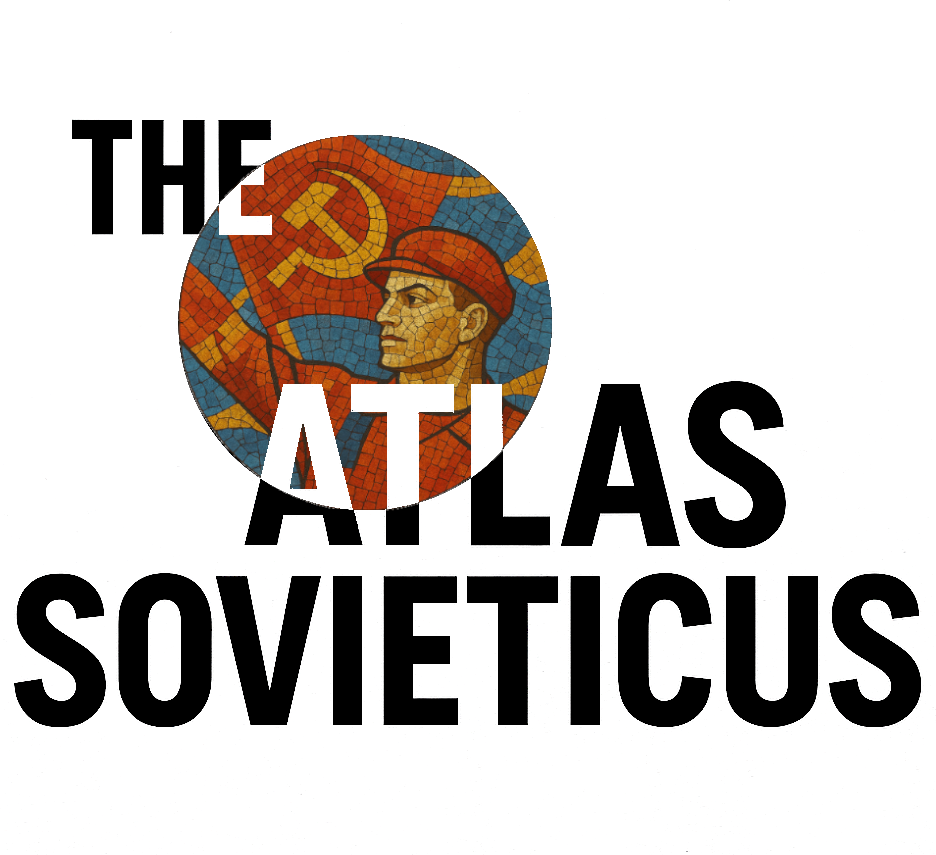In the spring of 2025, during our last visit to Kazakhstan, The Atlas Sovieticus documented numerous examples of Soviet monumental art across the country. We hunted grand reliefs in the capital, as well as vibrant mosaics in Northern cities such as Kostanay, Rudny and Petropavl. Among the most striking discoveries was a large, endangered mosaic panel inside Gymnasium No. 14 in Astana, long hidden and facing destruction amid a planned renovation.
Titled “School Years”, this monumental mosaic was created in 1975–1976 by the Tselinograd artist Yuri Alexandrovich Alexandrov, a member of the Union of Artists of the USSR. Extending across the length of a school corridor, Alexandrov’s work celebrates education, knowledge, and youth — recurring themes in Soviet monumental art. Its dynamic rhythm, luminous palette, and stylized human figures convey optimism and the forward-looking spirit characteristic of the 1970s.









As the renovation of the school progressed, concerned citizens, artists, and art historians drew attention to the risk of losing this masterpiece. Thanks to the persistence of many, the mosaic was ultimately preserved and restored — a rare and heartening victory for Soviet monumental heritage!
Yaroslav Antonyuk
The restoration was carried out by Yaroslav Antonyuk, son of the renowned artist Mikhail Antonyuk, whose work we have previously covered here. Yaroslav, a dear friend and reader of The Atlas Sovieticus, dedicated two months to bringing the mosaic back to life, carefully cleaning and reconstructing the damaged sections using original Soviet-era tesserae. Towards the end of the process, he was joined by his friend, artist Valery Krymov, who assisted in washing and final detailing.


“I carried out the entire restoration and, towards the end, brought in my friend, the wonderful artist Valery Krymov. He helped me wash and clean it and bring it back to perfect condition for about ten days,” Yaroslav told us. “All the materials used in the mosaic were from the Soviet era. I don’t think anyone could have recreated it so accurately — those colors simply don’t exist anymore. Even I had a hard time finding them.”
Now fully restored, the 90-square-meter mosaic shines once more in its original brilliance. It’s an irreplaceable work that bridges generations of Kazakh monumental art. At last, the composition has been safeguarded for future generations!
School years
The mosaic unfolds as a sweeping visual narrative, guiding the viewer through an idealized journey of a Soviet citizen. The composition flows dynamically from left to right, unified by swirling, wave-like patterns of blue, green, and earthen tones, symbolizing the continuous flow of life and knowledge.
The journey begins on the left with a celebration of sports and youthful energy, where dynamic figures of athletes leap and run. This vibrant scene transitions to themes of family, peace, and ideology. Here, tender depictions of family life are set alongside the prominent Cyrillic slogan “ПУСТЬ ВСЕГДА БУДЕТ СОЛНЦЕ” (“May There Always Be Sunshine”). Woven into the golden letters of this central section is the name “ЛЕНИН” (Lenin), explicitly grounding the mural’s message in foundational Soviet principles.
The narrative continues by highlighting culture and science, represented by an elegant dancing couple and depictions of molecules and scientific instruments. Finally, the mural concludes on the far right with a powerful image of productive and collective labor, as young people with tools work together, embodying their role in building the nation’s future. The pastel-colored rainbow, which originates from the beginning of the panel, comes to and end here.

The entire artwork is a true symphony of color and movement. It captures the optimism of its era and promotes the core values of education, community, and a bright, collective future to the students of the school. Stylistically, it’s a masterpiece, with the ethereal-like facial expressions and shadings as a highlight.
The value of saving monumental art
In the words of Yaroslav Antonyuk, one question from a worker during the restoration captures the mosaic’s true value:
“He asked me, ‘How much might this mosaic be worth?’ I told him, ‘Five million dollars.’ And I still think that’s a small price to pay.”
Preserving Soviet-era monumental art is not about nostalgia or the glorification of a past political system; it is about safeguarding crucial layers of cultural and historical identity. In Kazakhstan and beyond, these artworks are tangible historical documents that reflect the aesthetics and aspirations of their time. They were created by highly skilled artists using durable and complex techniques like smalti mosaic, and they possess immense artistic merit – representing a unique chapter in 20th-century art history. To destroy them is to erase the public visual record, leaving a void in the historical narrative. Furthermore, these pieces were designed as public art, and were integrated into the daily lives of citizens in schools, factories, and bus stops. Saving them maintains this legacy of art for the people by the people, and provides an invaluable educational tool for future generations to study, question, and understand the complexities of their own history.
An ending note
It’s only through the combined effort of the restorers, local advocates, and the school’s administration that “School Years” has been reborn. It’s a testament not only to the enduring beauty of Soviet monumental art but also to the determination of those who continue to protect it – a mission we also carry by heart.
Recently even better news arose! Backlights have been installed along the whole length of the corridor, making the artwork even more spectacular.






Our mission at The Atlas Sovieticus is to document and help safeguard this fragile artistic legacy. The fight to save monumental art continues with every project. If you are aware of a work at risk, we encourage you to get in touch.
See the dedication behind the renewal of “School Years” in a video of the restoration process here: link.










Leave a Reply